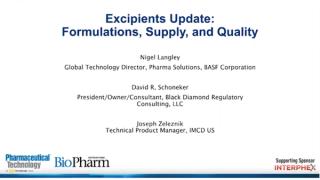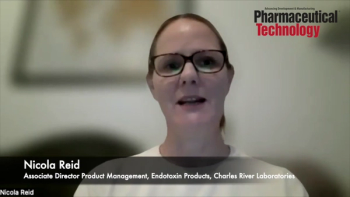
Quality Systems
Latest News
Latest Videos
More News

The company is voluntarily recalling all lots of Adrenalin Chloride Solution (EPINEPHrine nasal solution, USP) 30 mg/30 mL (1 mg/mL) 30 mL vials due to misleading labeling and its status as an unapproved drug.

The Center for Drug Evaluation and Research’s new center will coordinate and promote use of real-word data in regulatory decisions.

Pharmaceutical Technology® spoke with Nicola Reid, Associate Director Product Management, Endotoxin Products at Charles River Laboratories, to get her perspective on endotoxin testing and USP’s new Chapter <86> Bacterial Endotoxins Test Using Recombinant Reagents.

With so many personnel involved in the development and manufacture of pharmaceuticals, proper training of all staff is key to ensuring a quality product.

The European Commission has approved Novo Holdings' acquisition of Catalent, which includes the related sale of three manufacturing sites to Novo Nordisk, which is also acquiring the Czech Republic manufacturing site of Novavax for $200 million.

This paper explores the legal and regulatory framework around 3D drug printing, particularly for personalized medicine, considering regulatory compliance, business concerns, and intellectual property rights.

The draft guidance provides information on the agency’s accelerated approval process and criteria for approval.

A statistical procedure based on a quality range is proposed for demonstrating comparability between pre-change and post-change process slopes in an accelerated or stressed stability study.

The agency’s safety committee found no sufficient evidence of causal relationship between the antibiotic doxycycline and the risk of suicide or suicidal thoughts.

The European Commission has developed a roadmap aimed at reversing the rising trend of cancer across the European Union.

EXO Biologics and ExoXpert, an EXO Biologics subsidiary, have received GMP certification of a European manufacturing facility for exosomes and have successfully loaded mRNA and DNA payloads into GMP-grade exosomes for drug delivery.

A new platform allowing market authorization holders to report drug shortages has gone live.

FDA's approval will allow Kedrion to manufacture Ryplazim (plasminogen, human-tvmh), the only FDA-approved therapy for treating PLGD-1, at facility in Bolognana, Italy.

The $3.6 million investment will allow the CDMO to boost its advanced labeling, automated visual inspection, and fill/finish capabilities.

In this episode of the Ask the Expert video series, Susan J. Schniepp, distinguished fellow at Regulatory Compliance Associates, and Siegfried Schmitt, vice president, Technical at Parexel, discuss the new chapter, Chapter <86> Bacterial Endotoxins Test Using Recombinant Reagents

FDA's approval of eladocagene exuparvovec-tneq (Kebilidi) makes that product the first FDA-approved gene therapy for treating AADC deficiency.

CHMP has granted Eisai Europe and Biogen a positive opinion for the use of their monoclonal antibody therapy in treating early Alzheimer’s disease.

Balversa (erdafitinib) marks the first and only bladder cancer therapy to target FGFR3 alterations, with a demonstrated increase in overall survival from 7.8 months to 12.1 months.

A £520 million investment for manufacturing capacity was announced by Chancellor of the Exchequer, Rachel Reeves, but academic and industry leaders stress the money should be used to train personnel.

Pharmaceutical training programs are enhanced by integrating ICH quality risk management considerations.

The product license holder must have a supplier oversight system in place, says Siegfried Schmitt, PhD, vice president, Technical, Parexel.

CDER Director Patrizia Cavazzoni and CBER Director Peter Marks provided an update on the rare disease innovation hub in a new FDA Voices blog post.

The report highlights international regulators’ plans for the development and availability of vaccines to prevent and drugs to treat mpox.

In this episode of the Ask the Expert video series, Peter Walters, Fellow of Advanced Therapies at CRB Group, discusses how facilities used for solid dosage manufacturing may be retrofitted into sustainable cell and gene therapy production facilities.

This article presents an overview of FDA’s recent update to the guidance document, Control of Nitrosamine Impurities in Human Drugs.





